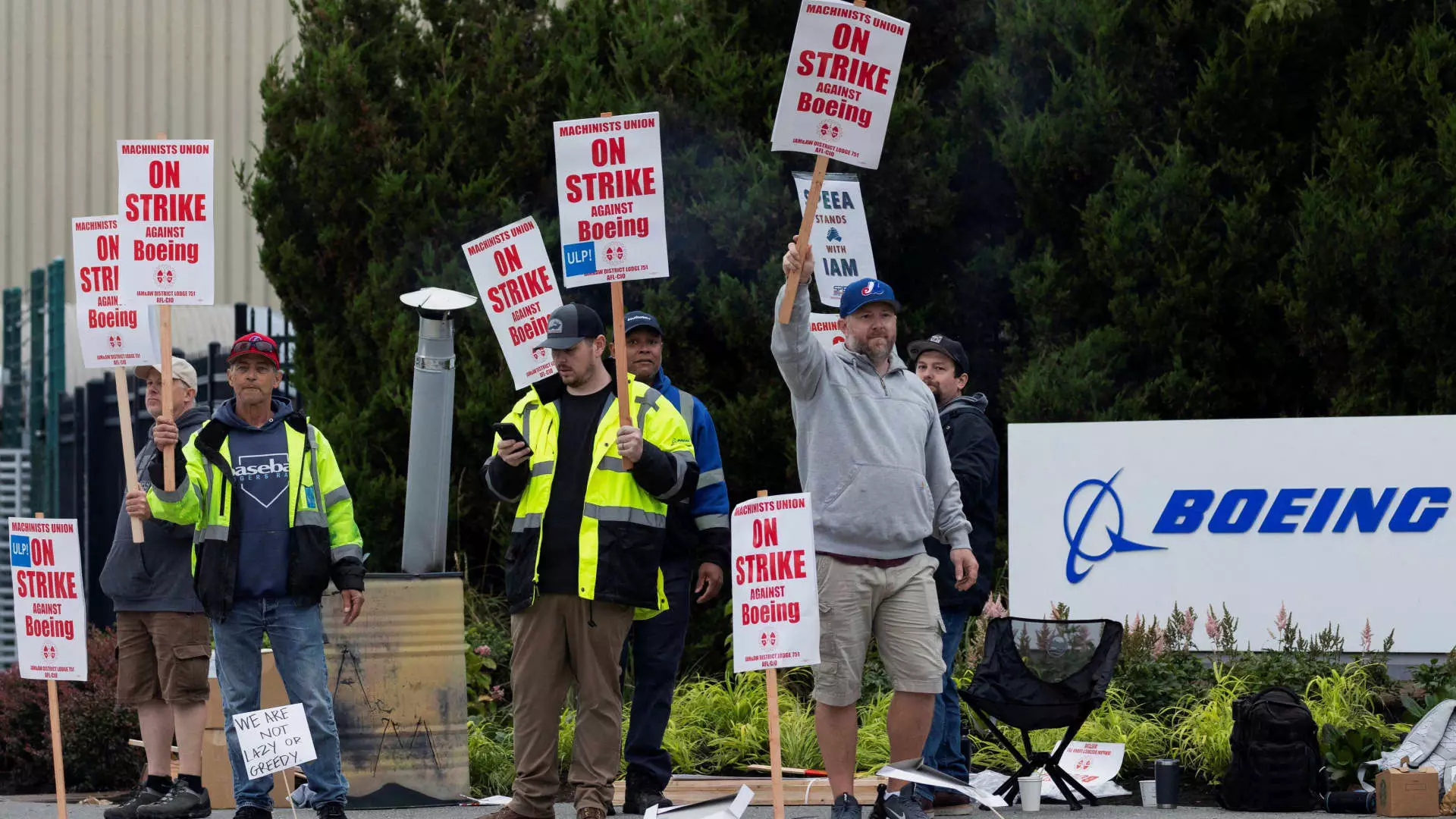Boeing is currently facing significant challenges as an ongoing machinist strike unfolds in the Pacific Northwest, threatening to escalate into a more profound crisis for the aircraft manufacturing giant. With workers demanding higher wages amid a rising cost of living, this labor disruption not only affects the employees but could cripple the company’s financial standing. In an era where recruitment and retention of skilled labor has become increasingly competitive, Boeing’s ability to navigate this strike and retain its workforce is critical.
The strike, which began on September 13, has seen over 30,000 machinists walk off their jobs after rejecting a tentative agreement. The workers are frustrated with Boeing’s initial offer and are seeking wage increases closer to 40%, along with annual bonuses and the replacement of lost pensions. As the situation develops, the financial ramifications for Boeing rise daily—an estimated $50 million is being lost each day, according to analysts.
Strain on Workers and Their Families
The workers at the center of this conflict are not just fighting for wages; they are battling the steep cost of living that has surged in the Seattle area. The median home price in Washington has skyrocketed over the last decade, leaving many machinists unable to afford homeownership. This financial strain has driven some to consider side jobs—options ranging from landscaping to moving furniture—to manage their expenses during the strike.
Many union members share a deep sense of pride in their work, which complicates their stance in negotiations. For example, Jake Meyer, a Boeing mechanic, expresses both a commitment to his craft and a pressing need for increased compensation. The repetitive cycle of labor disputes in the aerospace sector reflects a broader trend where skilled workers seek better remuneration and working conditions.
Boeing’s predicament does not only affect the company and its workers. The ramifications extend throughout its extensive network of suppliers, many of which are now halting shipments due to production stoppages. The intricate web of the aerospace supply chain means that a prolonged strike will have ripple effects across the industry, disrupting production timelines and potentially leading to job losses among suppliers as well.
The economic consequences are even more dire for Boeing itself. With about $60 billion in debt, the company is already in a precarious financial situation. Ratings agencies have warned that an inability to resolve the strike could result in a downgrade of Boeing’s credit rating, leading to increased borrowing costs—further exacerbating the company’s fiscal stress.
Kelly Ortberg, Boeing’s new CEO, faces a monumental challenge in this labor dispute. With only a few weeks in his role, Ortberg’s attempts to navigate the complexity of union negotiations against a backdrop of financial urgency reflect a situation that is becoming increasingly difficult. The company has announced temporary furloughs and a hiring freeze, indicating a reassessment of its workforce strategy as management seeks to control costs while balancing the needs of employees.
Despite efforts to engage in good faith negotiations, both the union and Boeing’s management have expressed disappointment regarding the lack of progress in discussions. Union negotiators emphasize their commitment to addressing workers’ concerns while expressing unease over Boeing’s reluctance to move beyond its initial wage proposals.
A Call for Resolution Amidst Rising Tensions
As the strike progresses, the call for a resolution has become increasingly urgent. The Biden administration has urged both parties to reach an agreement, recognizing the importance of a labor force that is both satisfied and well-compensated. The robust discussions taking place highlight the significant dynamics of labor negotiations in a post-pandemic market where skilled labor is scarce.
The situation at Boeing and its surrounding implications illustrate the critical intersection between labor rights and corporate viability. As strikes and labor actions rise across various industries, the case of Boeing might serve as a litmus test for how companies will respond to the growing demand for equitable wages and working conditions. The path forward remains uncertain, but the desire for resolution is palpable among both workers and organizational leadership.
In the coming weeks, the outcome of this labor dispute may well shape not only Boeing’s future but also set precedents for labor relations across the aerospace industry and beyond. Addressing these challenges head-on may yield insights into sustaining a balance between corporate profitability and a committed, well-compensated workforce.

Leave a Reply